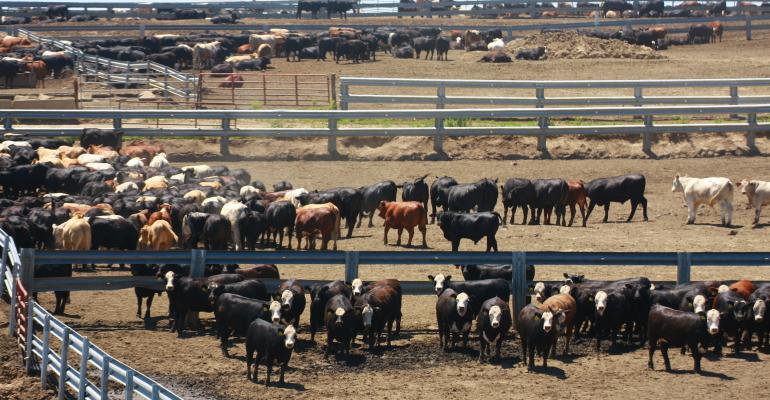Different physiological mechanisms may be responsible for feed efficiency regulation in diets differing in protein content.

Nutrition represents the major operating cost of beef cattle production, and feed efficiency improvements can lead to significant economic benefits and reduce the environmental footprint of red meat production, according to P. Carmona, D.F.A. Costa and L.F.P. Silva with the University of Queensland in Australia.
Usually, livestock selected for feed efficiency on high-protein diets are expected to perform as efficiently on low-protein diets, Carmona et al. wrote in a paper published in a recent edition of the Journal of Animal Feed Science & Technology. However, Carmona et al. suggested that the agreement would be low, and feed efficiency in low-protein diets would be related to nitrogen preservation mechanisms.
Using a completely randomized block design, they conducted an experiment with 55 Brahman steers with an initial bodyweight of about 346 kg to determine the agreement in feed efficiency rankings between a diet in which rumen degradable protein (RDP) was limiting and a protein-abundant diet.
Steers were fed in individual pens for two periods of 70 days, including an adaptation period of 10 days, with diets supplying either 70% or 100% of the steers' RDP requirements, the researchers explained. Residual feed intake (RFI), residual gain and residual feed intake and gain (RIG) were determined based on average daily gain (ADG), dry matter intake (DMI) and bodyweight.
Carmona et al. reported that in the low-protein diet, ADG was 0.99 kg per day (range of 0.38 to 1.53), DMI averaged 1.9 kg/100 kg of bodyweight per day (range of 1.6 to 2.3), RFI varied between -1.22 and 1.58 and residual gain varied from -0.62 to 0.53.
In the high-protein diet, ADG was 1.21 kg per day (range of 0.64-1.74), and DMI averaged 1.8 kg/100 kg bodyweight per day (range of 1.0-2.3). RFI varied between -1.52 and 1.58, and residual gain ranged from -0.36 to 0.41, the researchers added.
They said a Kappa analysis showed no agreement (P > 0.10) for RFI (-7%), residual gain (2%) or RIG (-1%) between the two diets.
According to Carmona et al., the more-efficient steers fed the low-protein diets — measured as residual gain ��— excreted less (P = 0.02) nitrogen in urine as a proportion of bodyweight and as a proportion of nitrogen intake, resulting in higher nitrogen use efficiency. However, they said this relationship was not present when steers were fed the high-protein diet (P = 0.55).
Carmona et al. concluded that different physiological mechanisms may be responsible for feed efficiency regulation in both diets; thus, appropriate diets must be used when selecting animals for feed efficiency.
About the Author(s)
You May Also Like

.png?width=300&auto=webp&quality=80&disable=upscale)

